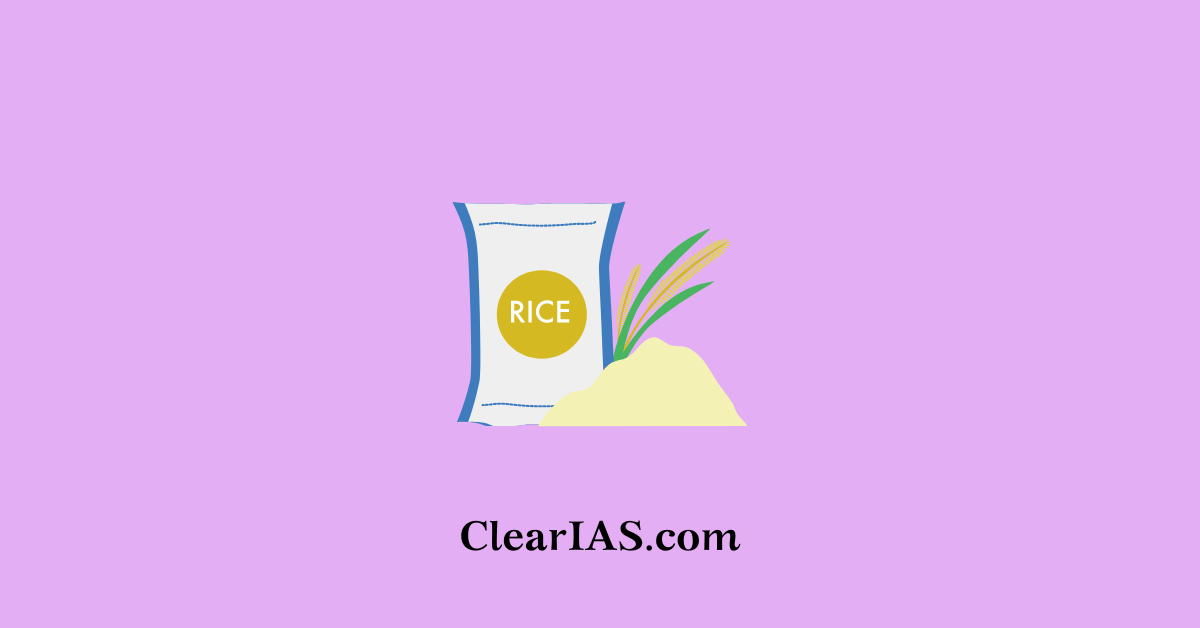 What is rice intensification? How is it beneficial for Indian agricultural sector? What are its advantages and disadvantages? Read further to know more.
What is rice intensification? How is it beneficial for Indian agricultural sector? What are its advantages and disadvantages? Read further to know more.
What is rice intensification?
System of Rice Intensification is a methodology to cultivate the rice crop in a manner that increases the yield of the crop along with reducing the need for water to grow this Kharif crop.
Recently, a study was conducted by The Watershed Organisation Trust (WOTR) along with Axis Bank Foundation. It is found in the study that the System of Rice Intensification (SRI) technique is significant in terms of water saving, input costs, plant growth, and other social impacts.
SRI was first introduced in the 1980s in Madagascar by Father de Laulanié then its potential went under testing in India as well along with several other countries. Father de Laulanié observed that SRI is an amalgamation of multiple beneficial practices.
SRI is not a standardized technique, instead, it is a set of ideas that helps in reducing resource waste and increases productivity using land, seed, water, nutrients, and human labor.
Technique of System of Rice Intensification
The Rice Intensification technique for cultivation involves the use of as much organic manure as possible, planting young seedlings in a square pattern at wide spacing, and irrigation intermittently with irrigation that keeps the soil moist but not swamped.
How Rice Intensification is Beneficial for India?
As we know, Agriculture plays a vital role in the Indian economy, and the average land-holding size in India is 1.08 hectares. Out of which, the average land holding of marginal farmers (Which constitute around 65% of total farmers in India), is less than one acre (0.4 hectares).
The above data clearly indicates that India constitutes a large number of small and marginal farmers.
It is beneficial in the context of India because:
- SRI paddy cultivation requires less quantity of seed per hectare. Mainstream paddy cultivation requires 20 kg of seed per acre but the System of Rice Intensification requires just 2 kg of seed per acre.
- The requirement of seed comes down as the seed is sown in a square pattern at wider spacing. In the traditional method of cultivation, it requires approx 792,000 no. of plants per acre which will come down to 64,000 only in the System of Rice Intensification.
- The area under rice cultivation has increased over the year but paddy is a water-intensive field that restricted its growth to several areas of the country and discourages its growth in less irrigated or not properly irrigated areas. SRI requires 15 to 20% less water for paddy production. So, SRI makes it viable for more areas to get indulge in rice cultivation.
- This makes SRI cost-effective and most sustainable for small and marginal farmers.
Advantages of System of Rice Intensification
SRI has several advantages:
- It requires more organic manure, so dependency on chemicals will reduce, and due to lesser use of chemicals farmers’ health will also improve.
- Soil health will also increase with time through biological activity.
- SRI provides Higher yield production of rice.
- Maturity time will be reduced by 10 days.
- Less water is required for SRI. Approx 15 to 20% of the water will be saved.
- it is less capital oriented so it will increase the income security of farmers.
- Grain weight increased without a change in grain size.
- Decreases dependency on chemical fertilizers and pesticides.
- Resists insects because it allows rice to absorb soil nutrients naturally.
- The SRI technique will help in the improvement of the food security of the country.
Disadvantages of System of Rice Intensification
The technique of System of Rice Intensification (SRI) has several disadvantages:
- SRI is initially more labor-intensive.
- It requires 50% more man-days for transplanting and weeding.
- Initially, it is difficult to acquire the necessary skills to master SRI.
- Requires some amount of irrigation, so it is not suitable for no irrigation areas.
Comparison Between Traditional Method and SRI
- In the SRI technique, 22.34% more yield of rice is witnessed as compared to the traditional methods/other methods.
- Net total return per acre is higher in SRI as compared to other methods.
- 15-20% less water is used during the production process.
Rice Cultivation in India
Rice is a Kharif crop and is a staple food of India. Over half of the world’s population i.e, over 3 billion people consume rice every day.
India is the second-largest producer and the largest exporter of rice.
In India, West Bengal is the largest producer of Rice followed by Uttar Pradesh.
Rice- Favourable Climatic Conditions
- In India, rice is cultivated in a wide range of climatic conditions and at various altitudes.
- A hot and humid climate with an extended period of sunshine and water supply.
- The growth pattern and yield of rice crops are all significantly influenced by temperature.
- It requires an average temperature of 21 to 37 degrees Celsius.
- Along with that, it requires an annual rainfall of between 150 to 300 cm.
Article Written By: Priti Raj





Leave a Reply